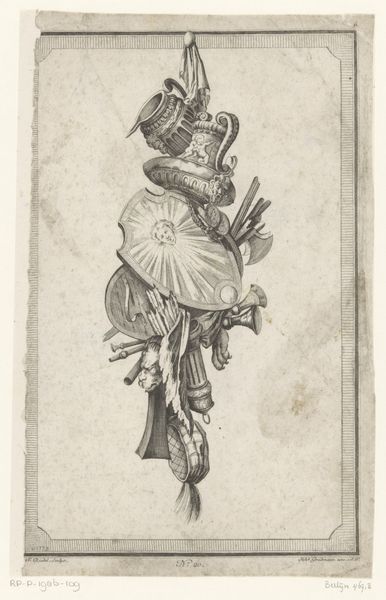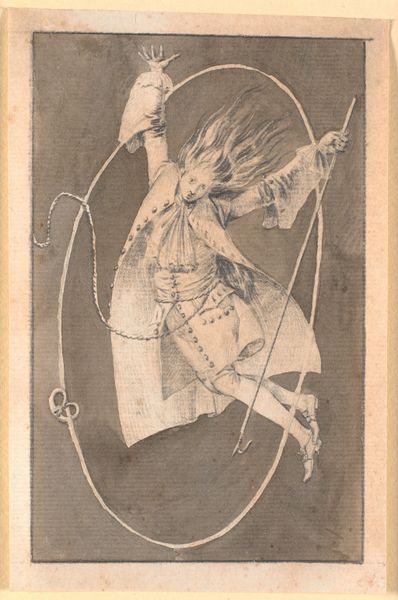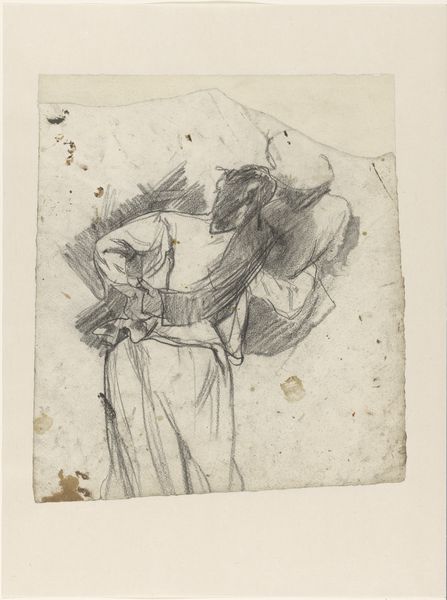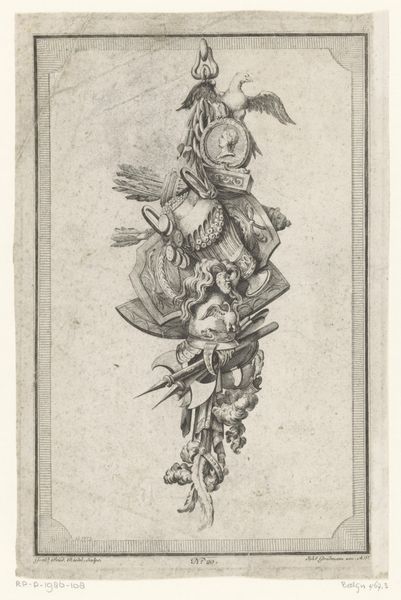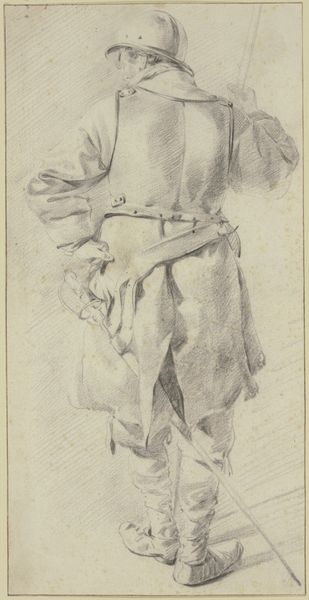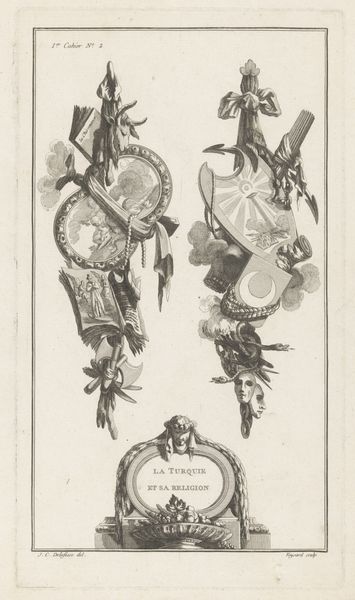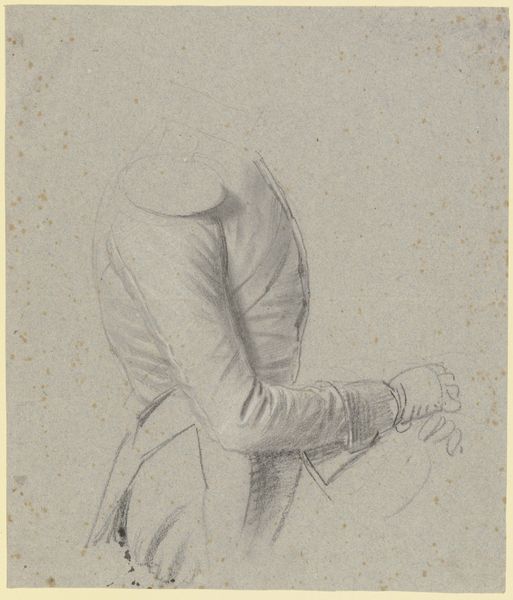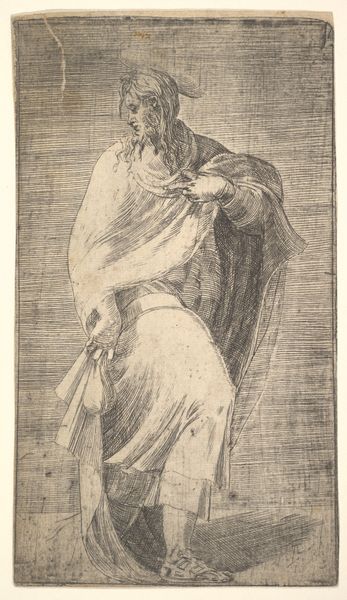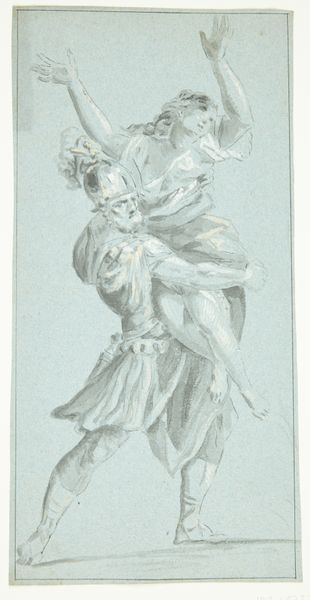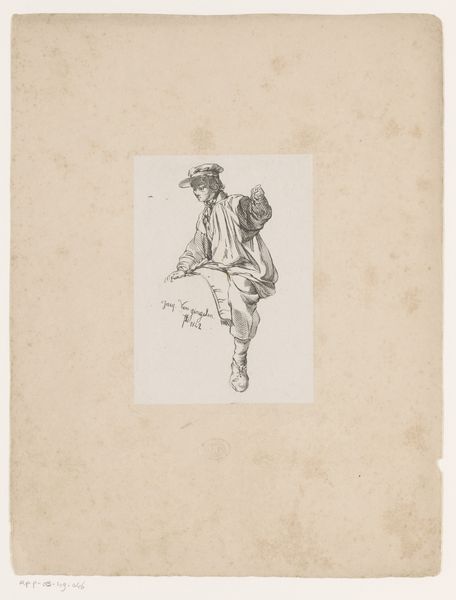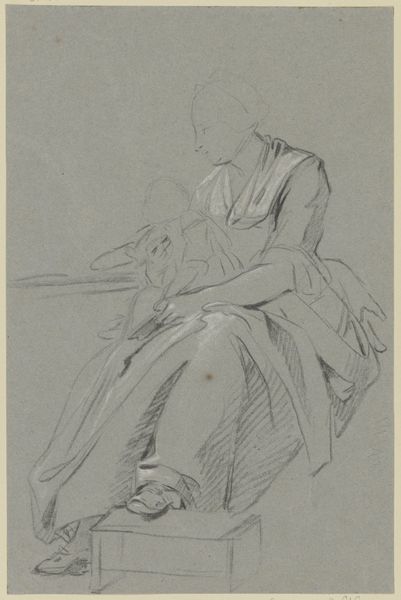
Trompe l'Oeil with Falconer's Bag and other Equipment for Falconry 1671
0:00
0:00
oil-paint
#
baroque
#
dutch-golden-age
#
oil-paint
#
oil painting
#
trompe-l'oeil
Dimensions: 92.2 cm (height) x 79.8 cm (width) x 5.5 cm (depth) (Brutto), 89.5 cm (height) x 77.5 cm (width) (Netto)
Editor: So, here we have Cornelius Norbertus Gijsbrechts’ “Trompe l'Oeil with Falconer's Bag and other Equipment for Falconry,” created in 1671. The realism is stunning; it's hard to believe it’s just oil paint. What cultural weight do you see in this particular arrangement of objects? Curator: Think of falconry as a symbol. In the 17th century, it was tied to aristocracy, power, and even freedom. This meticulously rendered bag isn't just equipment; it's a statement. Consider, what does suspending this bag "as if" on a wooden wall suggest about the artifice inherent in status? Editor: That’s interesting! I guess it's almost mocking the idea of status by presenting it in such an everyday way. The "as if" quality, as you put it, is heightened by the trompe l'oeil effect, right? Curator: Precisely! The trompe l'oeil creates a playful tension. It deceives the eye, but it also prompts us to question the real versus the represented. What cultural memories are triggered by this visual trickery? Think of the vanitas tradition and memento mori symbols of the period. Editor: So, it's not just about skill; it's about a commentary on the fleeting nature of life and status? This makes me see the bag differently, almost as a theatrical prop… Curator: The falconer's bag becomes an emblem ripe with connotations: the hunter’s skill, the bird’s training, the nobleman’s leisure, mortality… Gijsbrechts asks, through this illusion, where does the authentic image reside? Editor: I hadn’t considered how layered the symbolism could be. I’m now curious how viewers at the time might have interpreted it. Thanks, that's given me a lot to consider. Curator: Indeed! Cultural symbols offer so many threads that link us to the past. The art becomes a mirror, reflecting ourselves through the centuries.
Comments
No comments
Be the first to comment and join the conversation on the ultimate creative platform.
